Sierra Tucson offers effective, comprehensive treatment for individuals struggling with addiction and mental health concerns. Learn more about the signs and symptoms of GHB addiction.
Understanding GHB Addiction
Learn about GHB addiction
GHB, which is shortened from gammahydroxybutyrate, is a central nervous system depressant that typically comes in a powder or liquid form. When used, GHB elicits extreme euphoria, as well as lowered inhibitions and an increase in sex drive. Other impacts can include blackouts, memory loss, dizziness, and drowsiness. This substance is known to be used by rapists and other predators who will slip GHB into a beverage as a method of incapacitating their potential victims.
GHB falls into the same category of “club drugs” as methamphetamine, MDMA/ecstasy, and rohypnol. Both GHB and rohypnol are also commonly referred to as date rape drugs because they have potential to immobilize victims and cause them to suffer from amnesia.
From a medical perspective, GHB can be used in the treatment of narcolepsy, and in some very rare instances, in those who are struggling with alcohol withdrawal symptoms.
Those who continuously abuse GHB for recreational purposes put themselves at risk for a number of negative mental, emotional, physical, and social consequences. With effective professional assistance, these individuals can defeat their behaviors and learn how to make the changes necessary to help them obtains long-term abstinence from GHB and other psychoactive substances for a lifetime.
Statistics
GHB addiction statistics
The abuse of GHB is most common in teens and young adults who are under the age of 30. The National Institute on Drug Abuse (NIDA) reports that one percent of high school seniors, 0.8% of high school sophomores, and 0.3% of eighth graders have abused GHB at least once.
Between 1995 and 2005, researchers reported 266 deaths (155 men and 71 women) that occurred because of GHB intoxication. Those who lost their lives ranged in age from 15 to 55, with an average of 27.9 years old.
Women between 16 and 24 are four times more likely than any other group of individuals to be unwillingly exposed to GHB. In those cases reported that include assault and GHB, 74% of predators and 55% of victims had consumed alcohol.
Causes and Risk Factors
Causes and risk factors for GHB addiction
The chances that an individual will abuse or become dependent on GHB can be affected by many different genetic and environmental factors, including the following:
Genetic: Studies show that children of parents who struggle with addiction are eight times more likely to grapple with addiction at some point in their lives than those children whose parents never abused a substance. The genetic aspect of addiction has been reinforced by studies including adopted children and twins, as well as by technological advances that have provided more insight into the impact of certain genes.
Environmental: Those who were raised in home where the abuse of GHB or other substances occurred are likely to follow in similar footsteps. Also, those who were abused or neglected as children have a stronger likelihood of abusing drugs like GHB. Attending clubs, raves, or other events where GHB abuse is common can be a strong environmental influence, too. In addition, associating with others who use this drug can also add to one’s chances of abusing it.
Risk Factors:
- Family history of substance abuse and/or mental illness
- Personal history of prior substance abuse and/or mental illness
- Youth (GHB abusers are usually under age 30)
- Socioeconomic status (GHB users are typically from middle-class and upper-class families)
- Participating in raves and similar events
- Attending clubs where GHB is commonly abused
Signs and Symptoms
Signs and symptoms of GHB addiction
The effects of GHB can start to become noticeable within 20 minutes of taking the substance, and they can last for hours. Below are some of the common signs and symptoms that might show that an individual has been abusing GHB:
Behavioral symptoms:
- Clumsiness
- Slurred speech
Physical symptoms:
- Tremors
- Depressed respiration
- Nausea, vomiting, and diarrhea
- Lowered body temperature
- Slowed heart rate
- Loss of muscle control
- Excessive perspiration
- Heightened sexual arousal
Cognitive symptoms:
- Memory problems, including blackouts and amnesia
- Confusion and disorientation
- Increased sensitivity to light and sound
Psychosocial symptoms:
- Lowering of inhibitions
- Profound relaxation
- Decreased sense of anxiety
- Feelings of euphoria
Effects
Effects of GHB addiction
GHB abuse can lead to a number of negative outcomes, such as:
- Cardiac arrhythmia
- Physical harm from trips, falls, and other accidents occurring while under the influence
- Physical, social, and legal problems from risky and/or dangerous behaviors
- Diminished cognition
- Memory problems
- Depression
- Problems maintaining healthy interpersonal relationships
- Diminished performance at work or school
- Job loss and unemployment
- Academic failure
- Sexual assault
- Sexually transmitted infections
Co-Occurring Disorders
GHB addiction and co-occurring disorders
Common disorders that have been diagnosed in those who participate in GHB abuse can include the following:
- Anxiety disorders
- Depressive disorders
- Bipolar disorder
- Posttraumatic stress disorder (PTSD)
- Attention-deficit/hyperactivity disorder (ADHD)
- Alcohol use disorder
- Other substance use disorders
Withdrawal and Overdose
Effects of GHB withdrawal and overdose
Effects of GHB withdrawal: If an individual has become dependent on GHB, suddenly ending or reducing the use of this drug can be accompanied by a number of painful symptoms of withdrawal, such as:
- Vomiting
- Agitation and irritability
- Hypertension
- Increased heart rate
- Nausea
- Delirium
- Profuse perspiration
- Psychosis
- Cravings for GHB
Effects of GHB overdose: Those who show the following symptoms after consuming GHB might have overdosed and require immediate medical attention:
- Hallucinations
- Acute respiratory distress
- Extreme confusion and disorientation
- Slowed heartbeat
- Convulsions
- Loss of consciousness
- Coma












